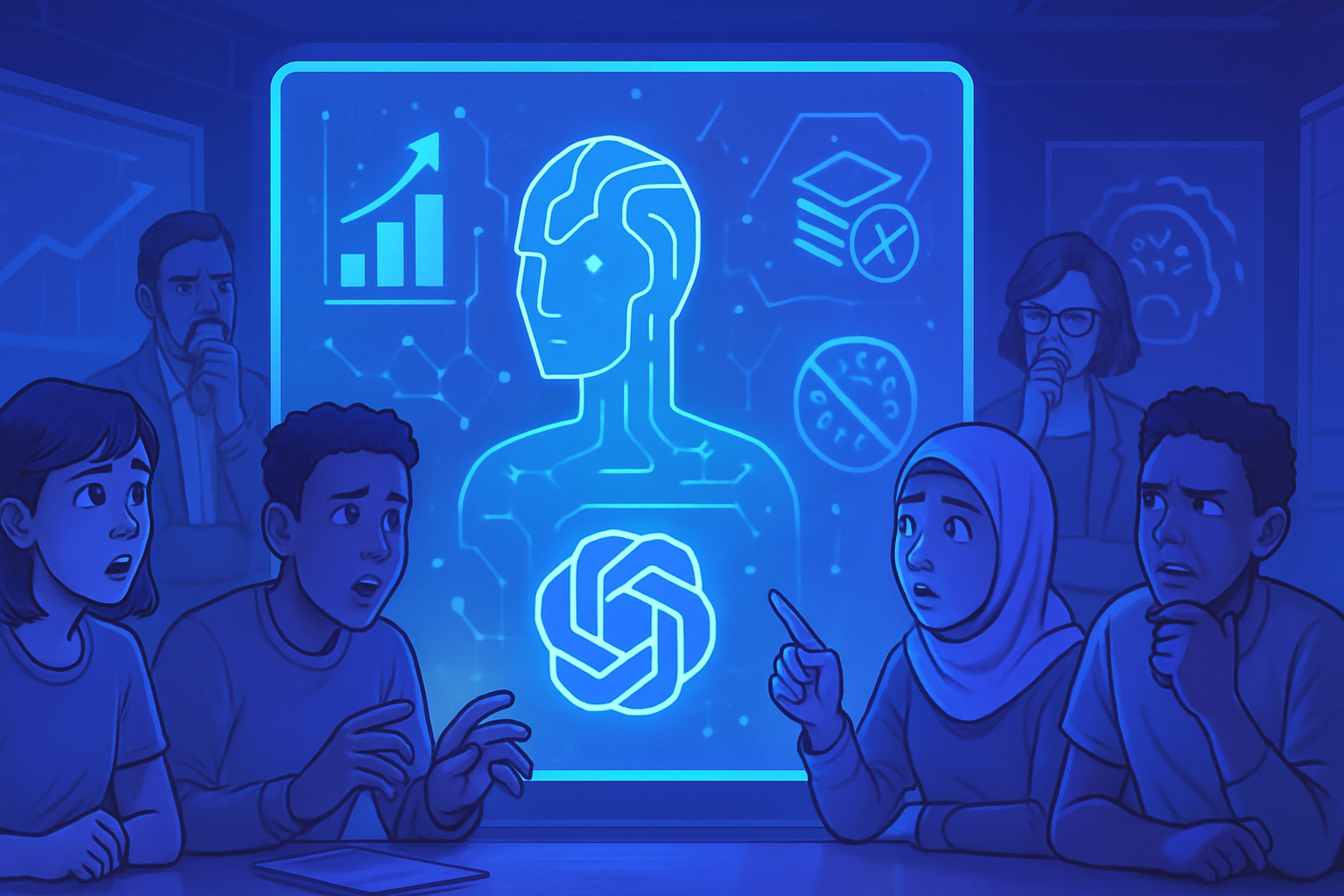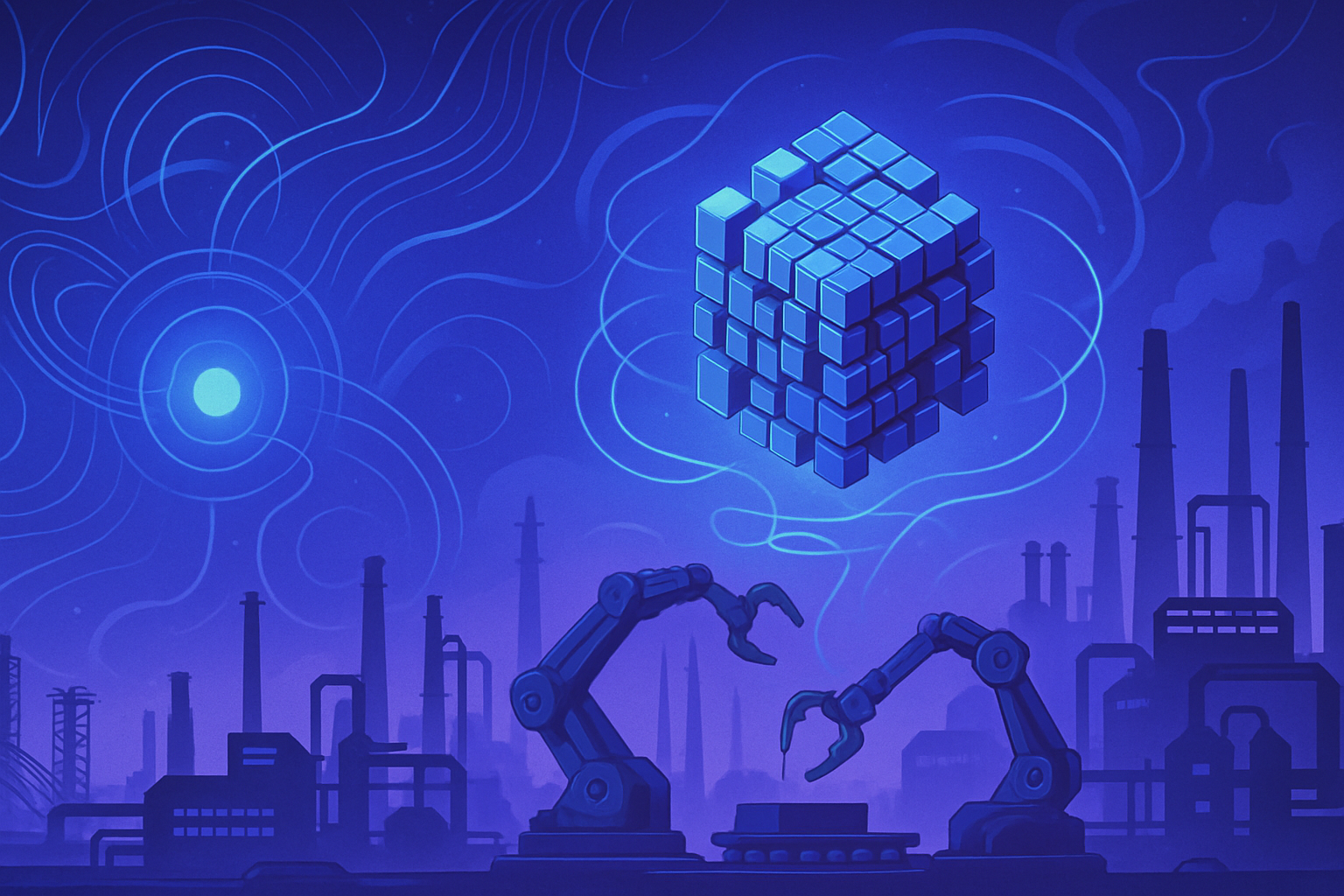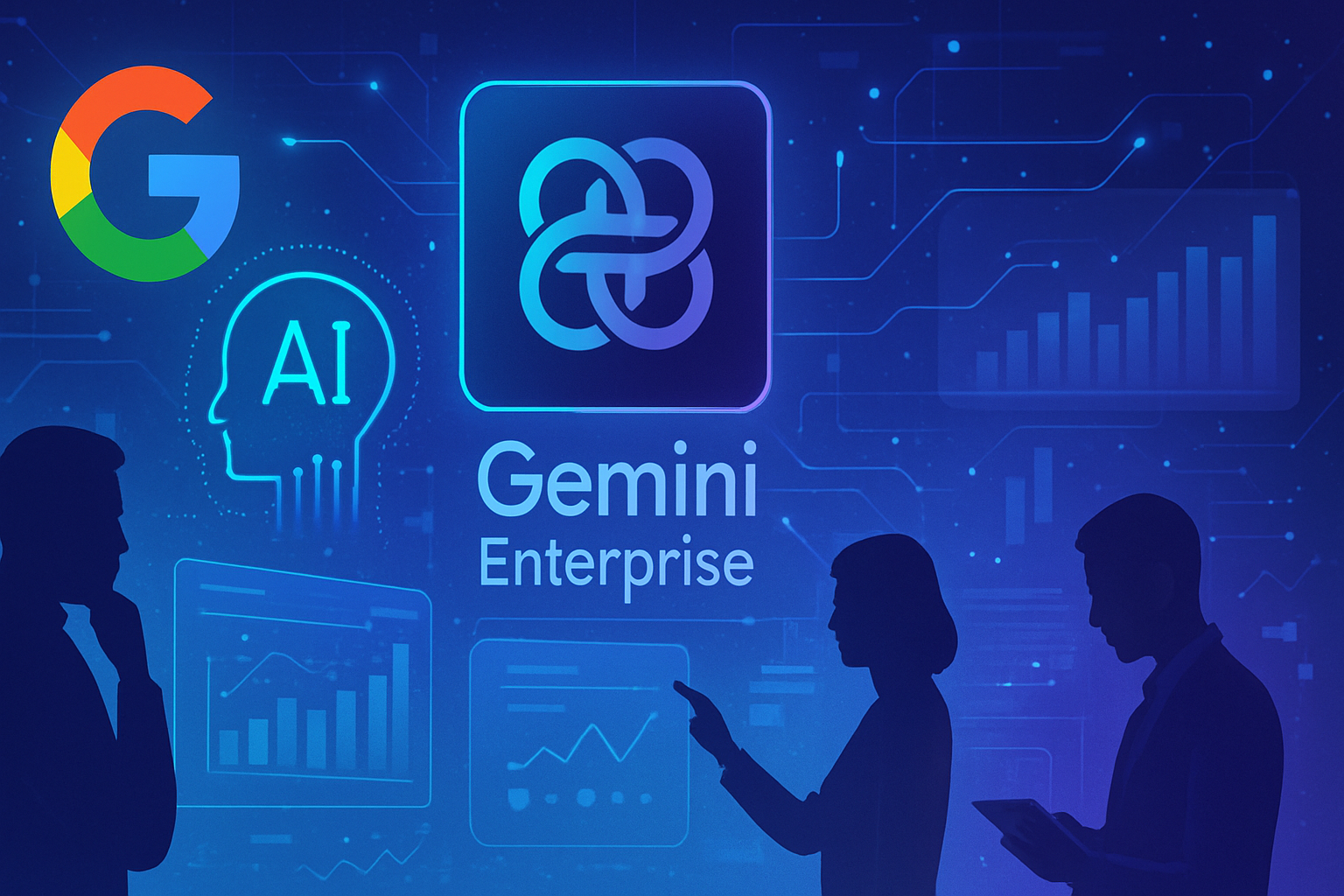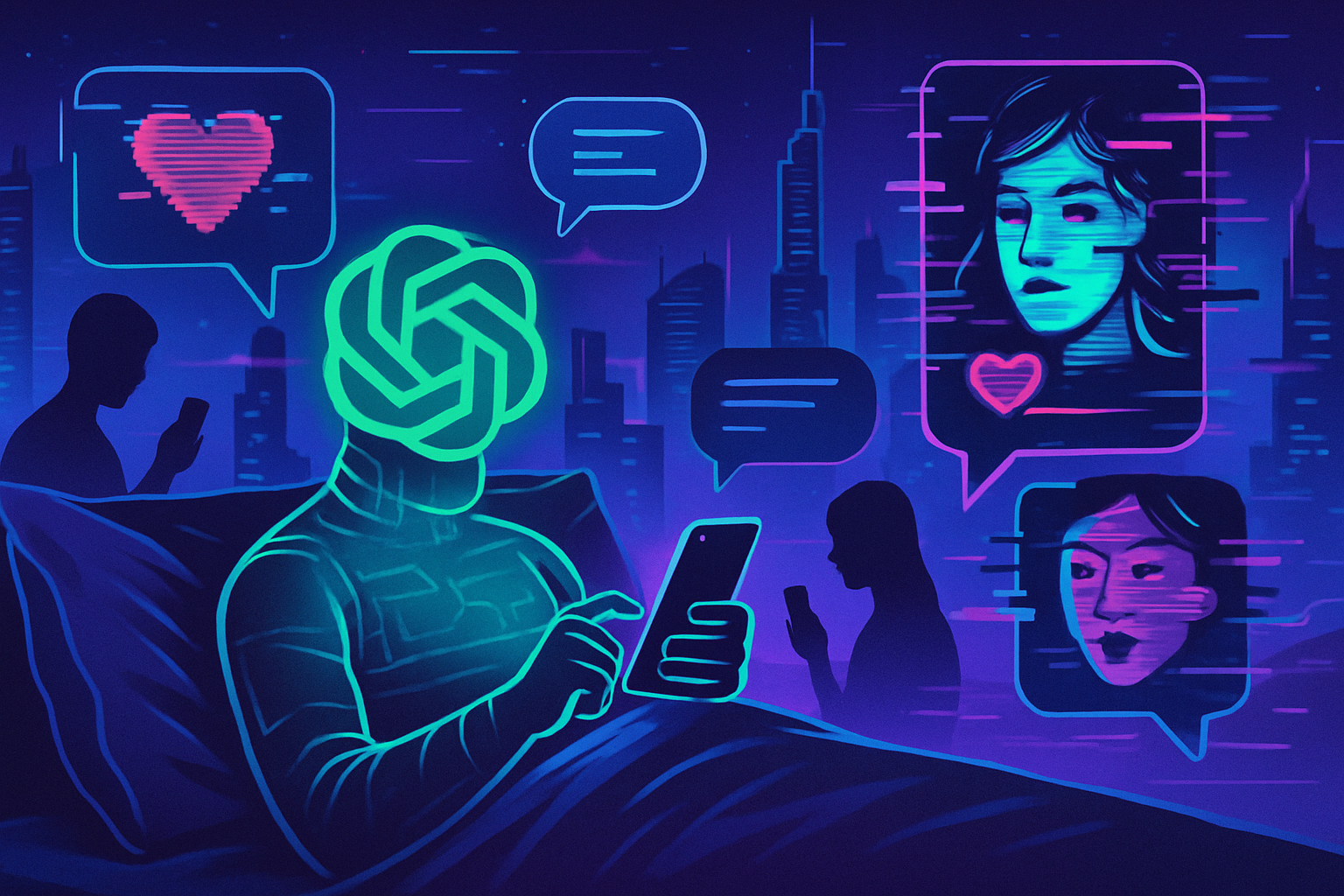Modern classrooms, often at a crossroads, oscillate between tradition and innovation. The introduction of ChatGPT shakes established norms. Teachers, caught between reluctance and curiosity, must navigate this new technological universe. The dialogue is intensifying between pedagogy and artificial intelligence. For students, ChatGPT offers unprecedented perspectives, but the question of ethical and pedagogical framework remains complex. Reconciling innovations and educational values is the priority, as this technology redefines teaching practices.
The emergence of ChatGPT in the educational environment
Since the appearance of ChatGPT, one observation stands out: technology is disrupting teaching methods within schools. A minority of teachers remain wary of this innovation, choosing to ignore its existence in their pedagogical practice. Others, on the contrary, are beginning to integrate discussions around this artificial intelligence. This debate resonates in classrooms, raising multiple questions regarding its use.
Teachers’ reactions to AI
Some teachers show a notable reserve toward the introduction of artificial intelligence into their courses. This apprehension often stems from deeply ingrained teaching habits and a desire to preserve traditional methods. Philosophy teacher Pierre Fasula, for example, highlights the weight of habits that hinders the necessary evolutions to address contemporary topics like AI.
In contrast, a number of professors, aware of current challenges, are keen to engage in dialogue with their students about skills related to AI. This includes providing specific training, particularly for 8th and 10th-grade classes, thereby establishing an adapted learning framework for this technological revolution.
Students and their relationship with technology
Students, for their part, are already navigating a world where AI occupies an increasing space. ChatGPT, for instance, has become embedded in students’ daily interactions, transforming their approaches to assignments and research. This rapid adoption of technology has resulted in various behaviors, ranging from everyday use to deeper questioning about dependence on these tools.
The advantages of ChatGPT are undeniable for some. It offers instant answers, supports information search, and facilitates content writing. However, the apprehension towards the risk of plagiarism or desensitization to traditional learning methods remains palpable among several teachers and parents.
The necessity of good practices
Thus, the question of good practices to adopt within classes arises. The debate crystallizes around how to use these technologies while preserving academic integrity. Everyone agrees that appropriate training for teachers is essential to understand this issue. By implementing learning sessions on AI, teachers can better guide students, enabling them to use these tools while maintaining critical thinking.
The evolution of teaching
Faced with constantly evolving technology, the national education system has begun to react proactively. Implementing training for educational staff and expanding school programs to include modules on AI are significant steps toward harmonious integration. The gradual incorporation of these new tools could enrich traditional teaching methods.
A recent report also discusses the beneficial impacts of AI on education, mentioning that the thoughtful use of ChatGPT could transform the way knowledge is assimilated, fostering collaborative and active learning among students. Some specialized articles provide enlightening insights, such as one on the advancement of conversational intelligence or on the impact of AI on our daily interactions.
The challenges of integrating AI
The encounter between educational tradition and technological innovations also raises fears. Teachers inexperienced in IT may feel overwhelmed by these advancements. Dominique Cazals, a physics-chemistry teacher, expresses clearly: technological ease is a fundamental criterion in using AI. Disparities in skills among educational staff make a uniform approach to technology integration necessary.
Debates surrounding the limits of AI occupy a prominent place in this discussion. Ethical questions emerge, highlighting the risks of algorithmic discrimination or misuse. Thus, the phenomenon ChatGPT should not be seen solely as a tool for assistance, but rather as a subject for engaging reflection for both teachers and students. It has already been recommended not to equate all artificial intelligences with ChatGPT, as highlighted in an article on Mistral AI.
Teachers and students must view AI as a learning partner. This requires structured support and open discussions about the potentials and limitations of these tools. The creation of an educational framework suited to these challenges will be decisive for the years to come.
Frequently asked questions
What are the main advantages of using ChatGPT in the classroom?
The advantages include personalized learning, immediate access to varied information, and assistance with writing assignments. ChatGPT can also stimulate creativity and encourage students to ask questions.
What are the reservations of teachers regarding the use of artificial intelligence like ChatGPT in the classroom?
Teachers may fear that ChatGPT will eliminate human interaction, provide inaccurate answers, or encourage dependence on technology, which could harm students’ autonomous learning.
How can teachers effectively integrate ChatGPT into their courses?
They can use it as a complementary tool for class discussions, practical exercises, or to help students develop their critical thinking by analyzing the responses generated by the AI.
What are the impacts of ChatGPT on the dynamics between students and teachers?
ChatGPT can transform the dynamics by fostering open dialogue and encouraging students to ask more questions, while requiring teachers to guide conversations and intervene when necessary.
What types of training should be offered to teachers to better use ChatGPT in the classroom?
Training on AI understanding, ethical use, and practical workshops demonstrating how to integrate ChatGPT into lessons would be beneficial for teachers.
How do students perceive the use of ChatGPT in their education?
Students may see this as an enriching learning opportunity, but some may also have doubts about its reliability and relevance compared to traditional teaching.
What challenges may arise when integrating ChatGPT into the school curriculum?
Challenges include managing technological differences among students, the need for additional resources for teachers, and the risk of inequality in access to technology.
How can we ensure that students use ChatGPT ethically in their schoolwork?
It is crucial to establish clear guidelines for using AI, teaching students to correctly cite contributions from ChatGPT and not to make it a substitute for their own reflection and work.






